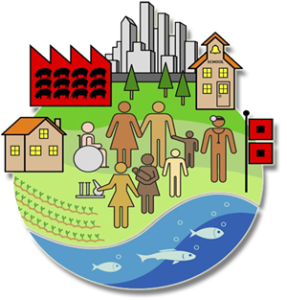Environmental Justice, or Rather Injustice
Lessons Learned: Looking Back to Go Forward
A series of articles exploring historical events that provide an important lesson for ensuring a more sustainable and healthy environment. Originally published as a bulletin feature for the newsletter of CHE-WA (Collaborative on Health and the Environment, Washington State chapter); produced by Steven G. Gilbert.

The EPA defines environmental justice as the "fair treatment and meaningful involvement of all people regardless of race, color, national origin, or income with respect to the development, implementation, and enforcement of environmental laws, regulations, and policies."
Many place the start of the environmental justice movement at Warren County, North Carolina in 1982. State officials decided that the Shocco Township would be the perfect site for a hazardous waste landfill that would receive 30,000 cubic yards of soil contaminated with polychlorinated biphenyls (PCBs). The state, with the permission of the EPA, built the hazardous waste dump only 7 feet above the water table instead of the required 50 feet. The local residents, mostly rural and low-income African Americans, were joined in protest by national civil rights groups, environmental groups, clergy, and members of the Congressional Black Caucus. African American civil rights activist Benjamin Chavis described this incident as environmental racism, which refers to the enactment or enforcement of any policy, practice, or regulation that negatively affects the environment of low-income and/or racially homogeneous communities as compared with affluent communities. In 1987, in a defining report, the United Church of Christ Commission for Racial Justice explored the idea of environmental racism in "Toxic Wastes and Race in the United States”.
Environmental injustice and environmental racism, where one group of people are exploited to benefit another, are still prevalent in the US and worldwide. In the US, it is estimated that a higher percentage of hazardous waste dumps are located in or near lower-income or minority communities. The issue of environmental justice can also be considered from a more broad, international perspective. For example, many of the global impacts of climate change are felt acutely in regions with historically lower carbon emissions. The just and fair treatment of all people, communities, and the environment is essential in creating a more sustainable and healthy world where children can grow and flourish to their full genetic potential.


